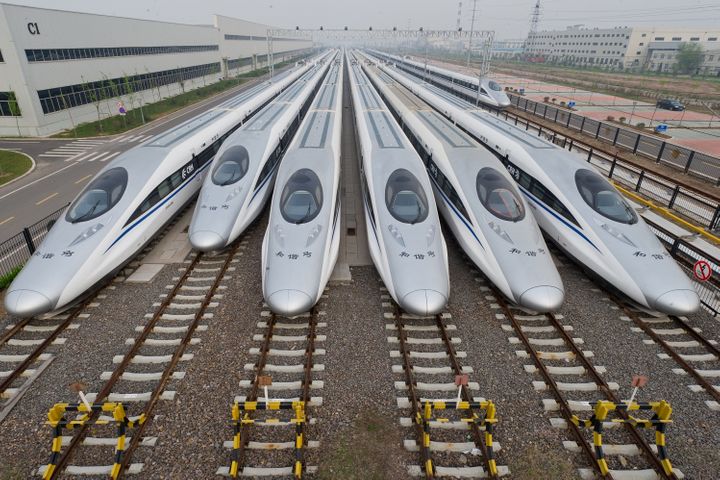 China's High-Speed Railroads Make Up 60% of Global Network, Boost Regional Economies
China's High-Speed Railroads Make Up 60% of Global Network, Boost Regional Economies(Yicai Global) Oct. 9 -- Investment in China's high-speed rail industry over the past five years has seen domestic high-speed railroads encompass over 60 percent of the global network, data from the National Bureau of Statistics shows.
As of the end of last year, total mileage of China's high-speed rail lines had reached 23,000 kilometers.
The strength of high-speed rail is its ability to bring in passenger flows, Zhang Baotong, counselor for Shaanxi provincial government and director of the Regional Development Consultation Center at Shaanxi Academy of Social Sciences, told Yicai Global. High-speed rail makes unique tourist resources in China's northwest more accessible and facilitates the convergence of visitors, logistics, information and capital.
Easily-accessible high-speed rail could also increase freight transport capacities of general railroads, Zhang added.
With economic belts and new towns emerging along rail lines, high-speed networks have significantly boosted regional economies within China.
The completion of the Guiyang-Guangzhou High-Speed Railway Line enabled quicker connections between remote southwestern Guizhou province and developed coastal provinces, like Guangdong, a senior executive at a real estate firm in Guizhou told Yicai Global. Many of Guangdong's companies have now relocated to Guiyang and other cities in Guizhou, increasing demand for housing in the province.
"The construction of high-speed railway networks greatly speeds up the development of city clusters and metropolitan areas," said Hu Gang, president of Guangzhou South China City Study Association and a professor at Jinan University's School of Management. Compared with road transport, high-speed and inter-city rail transit allows for higher capacities, better punctuality and greater security, providing a basic framework for the development of city clusters.
Before eastern province Jiangsu brought in high-speed rail, the region was divided into south, central and northern areas with different economies resulting from the lack of convenient transport, Wang Shuhua, an associate researcher at the Jiangsu Academy of Social Sciences' Regional Modernization Research Institute, told Yicai Global. Now travel times between city clusters have been shortened to just one or two hours, economic integration is more feasible.